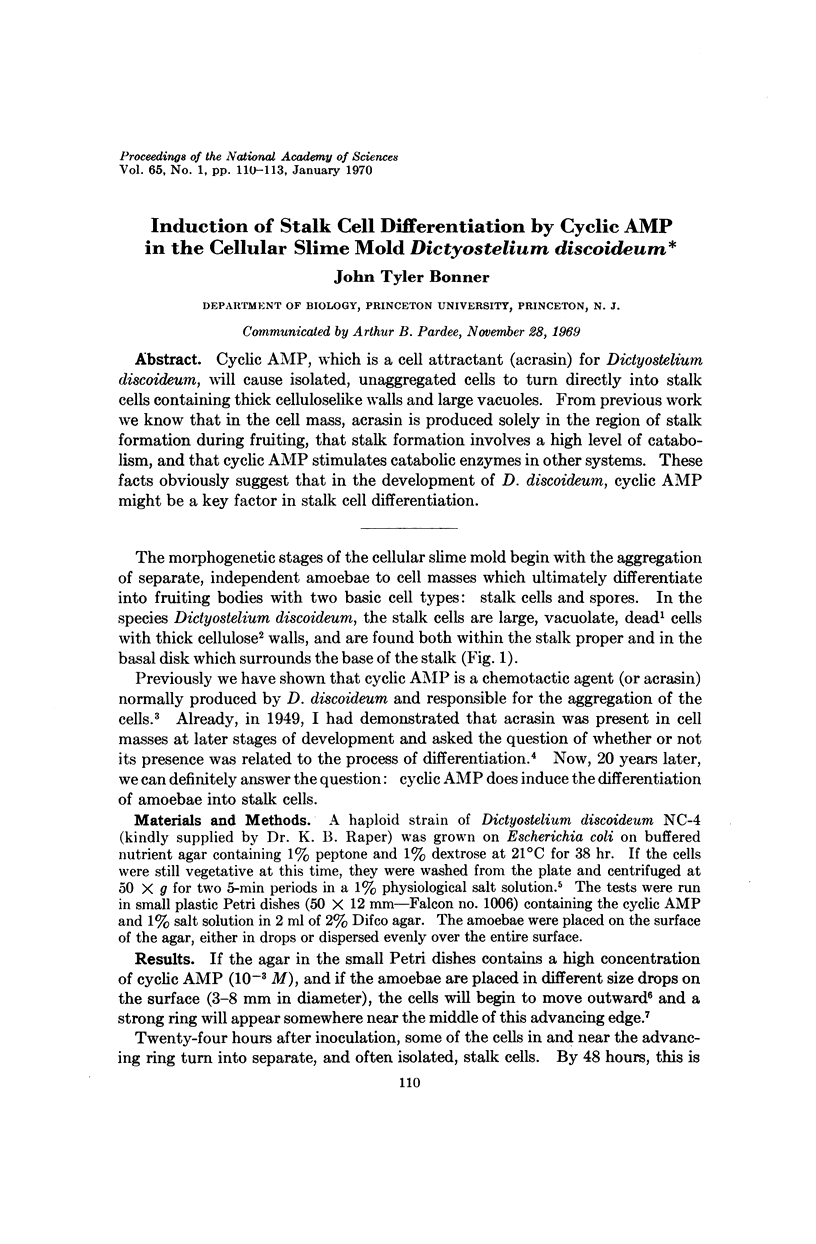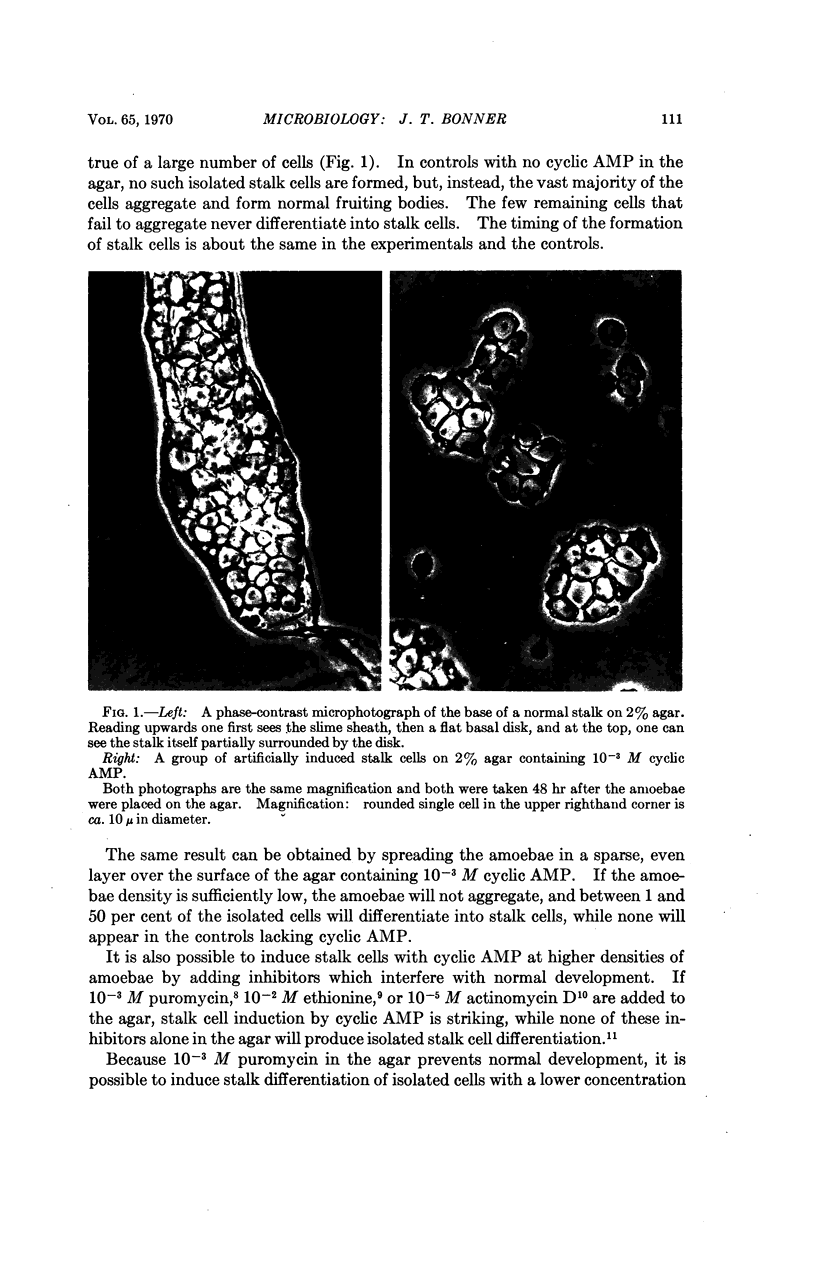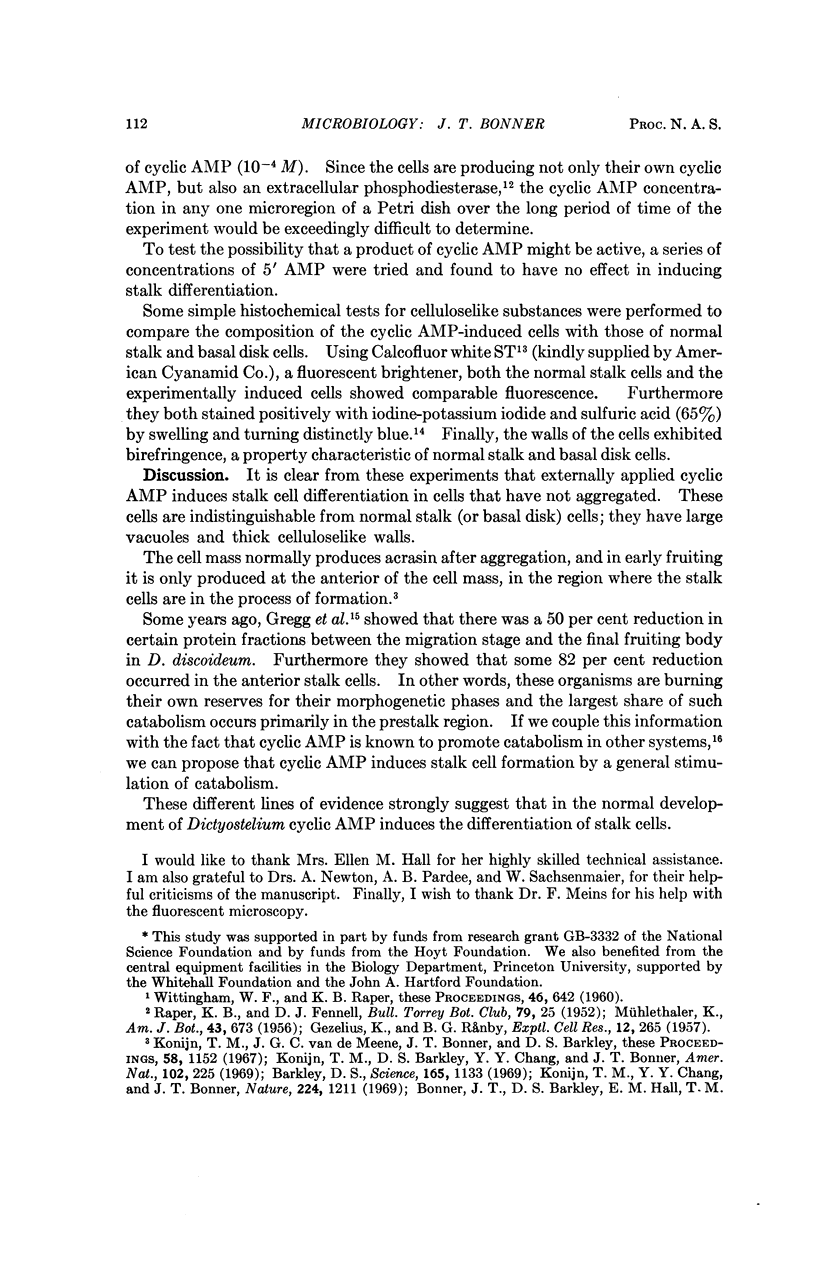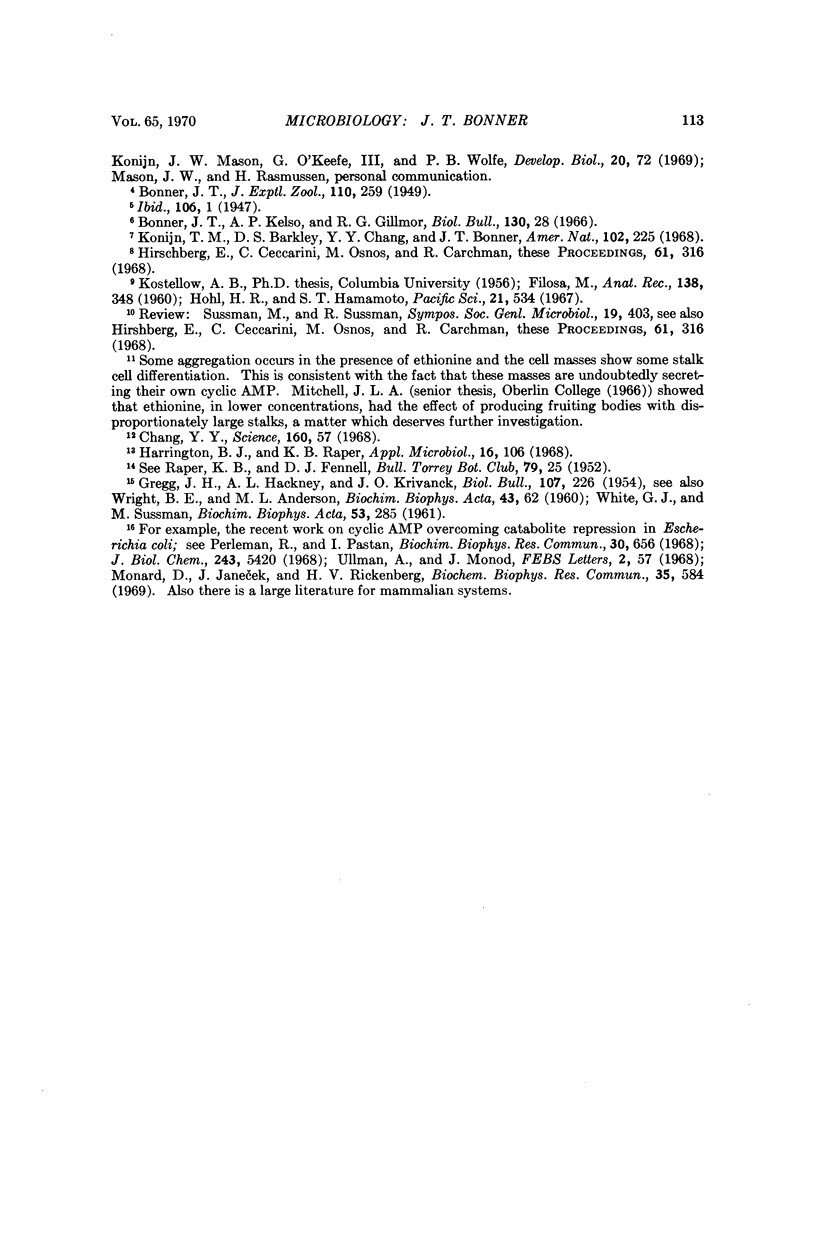Abstract
Cyclic AMP, which is a cell attractant (acrasin) for Dictyostelium discoideum, will cause isolated, unaggregated cells to turn directly into stalk cells containing thick celluloselike walls and large vacuoles. From previous work we know that in the cell mass, acrasin is produced solely in the region of stalk formation during fruiting, that stalk formation involves a high level of catabolism, and that cyclic AMP stimulates catabolic enzymes in other systems. These facts obviously suggest that in the development of D. discoideum, cyclic AMP might be a key factor in stalk cell differentiation.
Full text
PDF



Images in this article
Selected References
These references are in PubMed. This may not be the complete list of references from this article.
- Bonner J. T., Kelso A. P., Gillmor R. G. A new approach to the problem of aggregation in the cellular slime molds. Biol Bull. 1966 Feb;130(1):28–42. doi: 10.2307/1539950. [DOI] [PubMed] [Google Scholar]
- Chang Y. Y. Cyclic 3',5'-adenosine monophosphate phosphodiesterase produced by the slime mold Dictyostelium discoideum. Science. 1968 Jul 5;161(3836):57–59. doi: 10.1126/science.161.3836.57. [DOI] [PubMed] [Google Scholar]
- Harrington B. J., Raper K. B. Use of a fluorescent brightener to demonstrate cellulose in the cellular slime molds. Appl Microbiol. 1968 Jan;16(1):106–113. doi: 10.1128/am.16.1.106-113.1968. [DOI] [PMC free article] [PubMed] [Google Scholar]
- Hirschberg E., Ceccarini C., Osnos M., Carchman R. Effects of inhibitors of nucleic acid and protein synthesis on growth and aggregation of the cellular slime mold Dictyostelium discoideum. Proc Natl Acad Sci U S A. 1968 Sep;61(1):316–323. doi: 10.1073/pnas.61.1.316. [DOI] [PMC free article] [PubMed] [Google Scholar]
- Konijn T. M., Chang Y. Y., Bonner J. T. Synthesis of cyclic AMP in Dictyostelium discoideum and Polysphondylium pallidum. Nature. 1969 Dec 20;224(5225):1211–1212. doi: 10.1038/2241211a0. [DOI] [PubMed] [Google Scholar]
- Konijn T. M., Van De Meene J. G., Bonner J. T., Barkley D. S. The acrasin activity of adenosine-3',5'-cyclic phosphate. Proc Natl Acad Sci U S A. 1967 Sep;58(3):1152–1154. doi: 10.1073/pnas.58.3.1152. [DOI] [PMC free article] [PubMed] [Google Scholar]
- Monard D., Janecek J., Rickenberg H. V. The enzymic degradation of 3',5' cyclic AMP in strains of E. Coli sensitive and resistant to catobolite repression. Biochem Biophys Res Commun. 1969 May 22;35(4):584–591. doi: 10.1016/0006-291x(69)90388-x. [DOI] [PubMed] [Google Scholar]
- Perlman R. L., Pastan I. Regulation of beta-galactosidase synthesis in Escherichia coli by cyclic adenosine 3',5'-monophosphate. J Biol Chem. 1968 Oct 25;243(20):5420–5427. [PubMed] [Google Scholar]
- WHITE G. J., SUSSMAN M. Metabolism of major cell components during slime mold morphogenesis. Biochim Biophys Acta. 1961 Oct 28;53:285–293. doi: 10.1016/0006-3002(61)90441-3. [DOI] [PubMed] [Google Scholar]
- Whittingham W. F., Raper K. B. NON-VIABILITY OF STALK CELLS IN DICTYOSTELIUM. Proc Natl Acad Sci U S A. 1960 May;46(5):642–649. doi: 10.1073/pnas.46.5.642. [DOI] [PMC free article] [PubMed] [Google Scholar]



